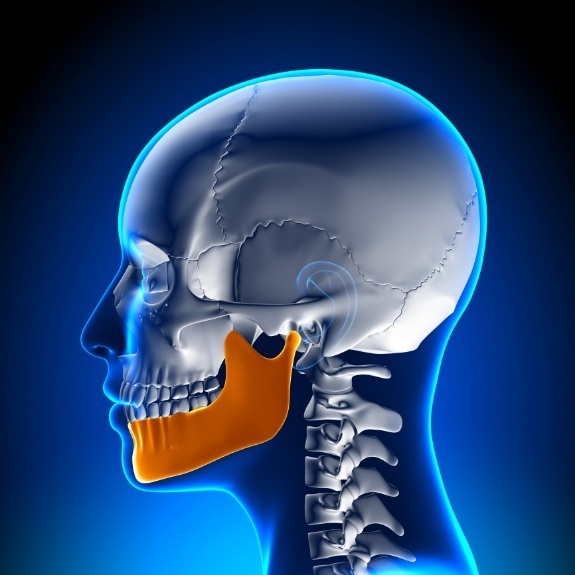
TMJ pain is no laughing matter. It can greatly affect your quality of life, so it’s important to understand what you can do to help alleviate or manage your symptoms. Luckily, there are many things that can be done to help.
TMJ pain
Before we get into what you can do to help your pain, let’s get into why you may be having it. As many as 10 million Americans suffer from TMJ disorder, otherwise known as TMD. TMJ disorder occurs when the jaw joint becomes injured, misaligned, or stressed. This can happen for a variety of reasons, such as stress, teeth grinding and clenching, arthritis in the temporomandibular joint, or even trauma to the head, neck, or jaw.
A lot of your daily pain or annoyances could be linked to TMJ pain. For example, TMJ disorders are connected to:
- Jaw pain
- Facial pain
- Headaches
- A locked jaw
- Pain in the neck, shoulders, and ears
- Inability to open your mouth widely
- Popping or clicking sounds when you open and close your mouth
The severity of your TMJ disorder can make your pain simply uncomfortable, or even unbearable.
10 tips for TMJ pain management
TMJ exercises
There are many TMJ exercises that can help you relieve TMJ pain. Some of these exercises include:
- Relaxes jaw exercises
- Goldfish exercises
- Chin tucks
- Side-to-side jaw movement exercises
- Forward jaw movement exercises
Good posture
Although the connection may be surprising, your posture has a connection with TMD. Poor posture can place a lot of pressure on your neck, shoulder, and face, so, one common way of managing TMJ pain is by correcting your posture. Choose chairs with back support for when you’re sitting for long periods of time and take frequent breaks. And whether you are standing or sitting, have your shoulders pulled back to straighten your back muscles.
Sleep
The way you sleep also has an impact on TMJ pain. To avoid making the pain worse, avoid sleeping on your stomach and use pillows to support your neck throughout the night. It’s best to sleep on your back.
Medications
There are medicinal options when it comes to managing pain associated with a TMJ disorder. This may include over-the-counter pain medication, or a prescription from your dentist. If a TMJ disorder is caused by muscle spasms, your doctor may also prescribe muscle relaxants for a period of time.
Hot/cold compress
Ice has often been used to reduce pain and swelling (even frozen peas can do the trick!). On the other hand, heat can relax muscles and increase blood flow. These are both useful when it comes to TMJ pain management. So, try using a cold or hot compress for about 20 minutes a day to help alleviate symptoms.
Botox injections
Botox injections have also been found to help with TMJ pain management in some cases. These injections might be done on trigger points or to help prevent chronic teeth grinding.
Surgical options
Surgery is typically the last resort when it comes to managing TMJ pain. But, for some rare cases, your dentist may recommend surgery. This might be in the form of dental treatment that improves your bite and aligns your teeth, removing fluid or debris from your joint, or joint replacement surgery.
Reduce stress
Stress can aggravate the symptoms of TMJ disorders. Stress can make you clench and grind your teeth, which can make your pain worse. So, in order to relieve that pain, start de-stressing your life! There are many practices that can help with this, but here are just a few:
- Exercising frequently
- Eating a healthy diet
- Reducing caffeine intake
- Meditating
- Practicing mindfulness
- Spending time with loved ones
- Spending more time outdoors
- Practicing deep breathing
- Journaling
Avoid certain behaviors
There are many everyday behaviors that can contribute to TMJ pain that you can try to avoid. Some of these include:
- Biting your nails
- Chewing your cheeks and lips
- Clenching and grinding your teeth
- Using teeth as tools
- Yawning
- Yelling
- Eating hard foods
- Taking large bites
- Eating very chewy foods
- Excessively chewing gum
Equilibration/Occlusal adjustments
To help take pressure off your jaw, a dentist may recommend equilibration or occlusal adjustments. This is where they identify where your teeth don’t align properly, and use advanced techniques to get your teeth to fit together better.
Occlusal splints
A skilled dentist like Dr. Ruiz may also recommend an occlusal splint to help manage your TMJ symptoms. You would wear this splint while sleeping, making your jaw muscles and joints more relaxed throughout the night in a more appropriate position. Overtime, they will get used to this new location.
Visit Dr. Ruiz & Associates, Inc for TMJ treatment in Burbank, CA
If you’re dealing with pain related to a TMJ disorder, it’s important to visit a dentist that can help you find a treatment to manage the pain. The expertise and personalized care provided by Dr. Ruiz and his team can provide you with TMJ treatment in Burbank, CA. We will evaluate your facial and oral structures to determine the right treatment for you. Check out our Google reviews and call our office to make an appointment!




